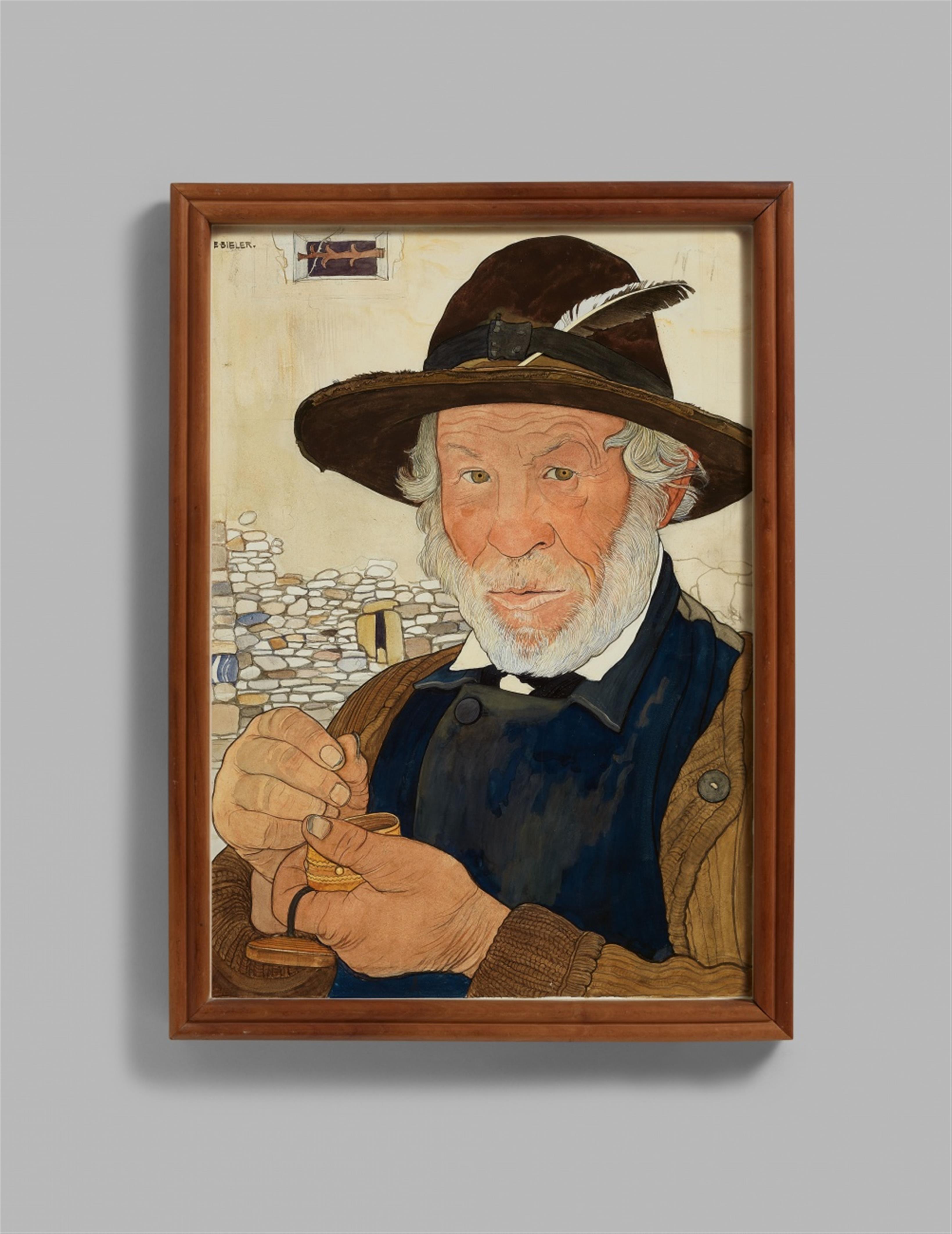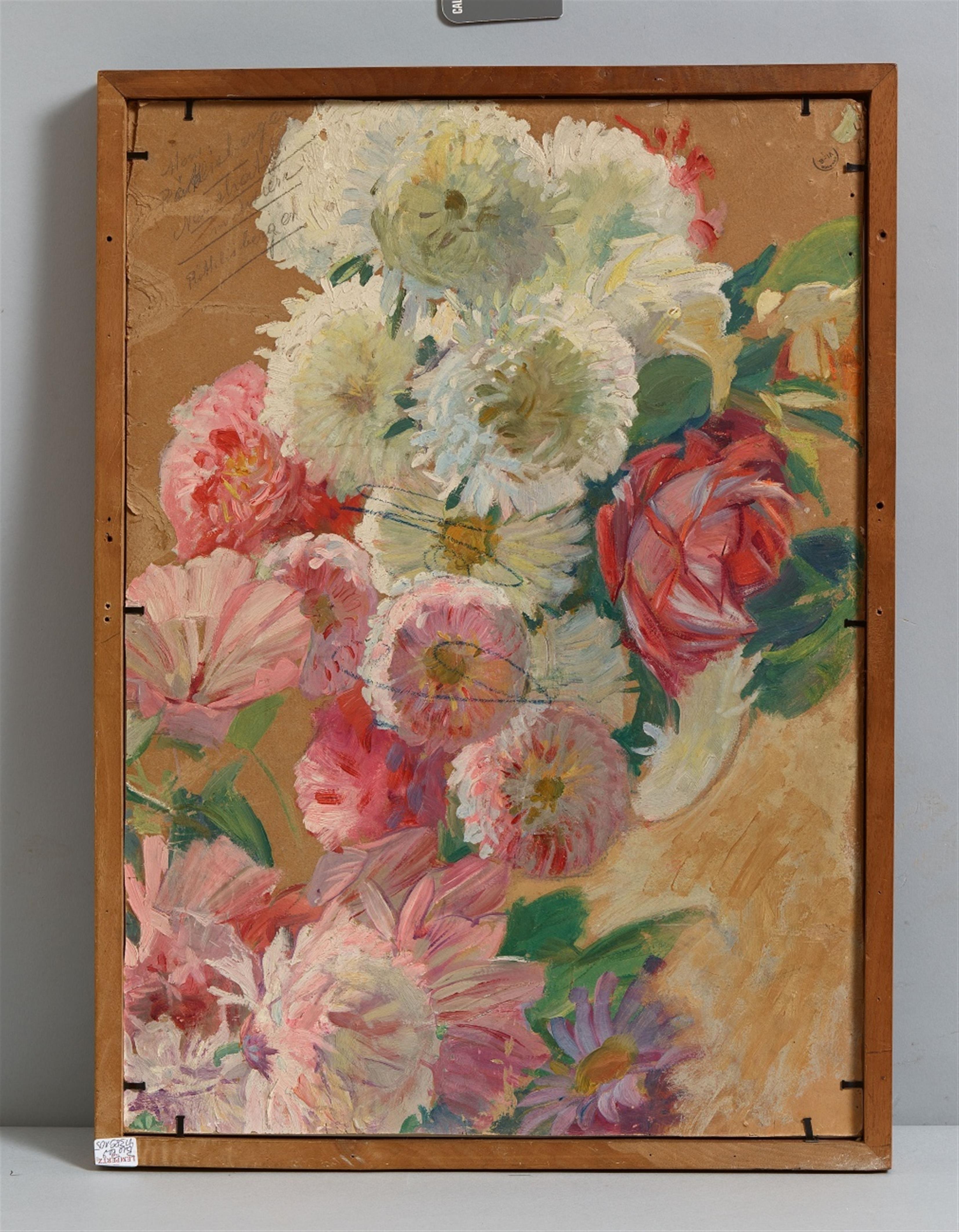Ernest Biéler
Le Marguillier (L'Homme à la tabatière)
Circa 1907
Watercolour over pencil on paper, laid down on card by the artist. With an oil sketch (flowers) on the verso 54.5 x 39 cm In artist's frame. Signed 'E·BIELER.' in black upper left. - In fine condition with vibrant colours. With occasional inconspicuous rubbing and a short old tear in the left margin.
Ernest Biéler's artistic oeuvre reflects the important artistic developments of his time: the ideas of realism, impressionism and art nouveau all equally resonate in his works.
Biéler's work offers viewers access to entirely distinct realms of motifs - the city, on the one hand, and the countryside and alpine world of Switzerland, on the other. The dialectic of these subjects seems to point directly back to the very specific personal situation of the artist's life, which was defined by his passing back and forth between his homeland of Valais and Paris, where he underwent his training as an artist from 1880. As the son of a veterinarian and a diplomat's daughter from the Polish aristocracy, Biéler enjoyed a middle-class and simultaneously very multifaceted upbringing and became just as familiar with rural life as with the salon. His mother had already fostered the artistic education of her son, so that his studying art at the Académie Julian and Académie Suisse in Paris logically followed.
In France, Ernest Biéler's interest in that period's realistic and idealistic tendencies grew - an interest that would find what is perhaps its most concentrated form in his iconic portraits of Valais's alpine farmers. From 1906 he created his famous “Types de Savièse”, typified likenesses of the people of his adopted home of Savièse. In an extremely technically demanding watercolour technique over pencil, the artist familiarised himself more closely and in detail with the appearance of his models. Our remarkably well-preserved portrait of the sacristan with his tobacco case shows how precisely Biéler was able to grasp his “types”. With the fine-lined drawing of the hair or the meticulously executed details, such as the slightly frayed brim of the hat, the sitter seems to be standing directly opposite the viewer and nonetheless remains strangely distant through the fact that he has obviously been rendered as a type.
It is scarcely possible to overlook the fact that, in this important group of works, the painter has occupied himself not so much with the individual or sitter, but instead with a type, with seeking to explore a specific identity. In historical terms, this engagement took place in the context of a contemporary discussion about the concept of a national art or about what typified Swiss art - a discussion that also shaped the work and the reception of Ferdinand Hodler, for example.
Certificate
We would like to thank Ethel Mathier, Basel, for kind information and scientific advice. The work is to be included in the forthcoming catalogue raisonné of the works of Ernest Biéler compiled by Ethel Mathier.
Provenance
Edmond Röthlisberger, Neuchâtel (1907, acquired there); Jens Scholz Kunstauktionen Cologne, auction no. 17, 5 September 2003, lot 27; Private possession, Rhineland
Exhibitions
Neuchâtel 1907 (Société des Amis des Arts), XXXIIe Exposition de la Société des Amis des Arts, cat. no. 106 ("Le Marguillier") with illus.




